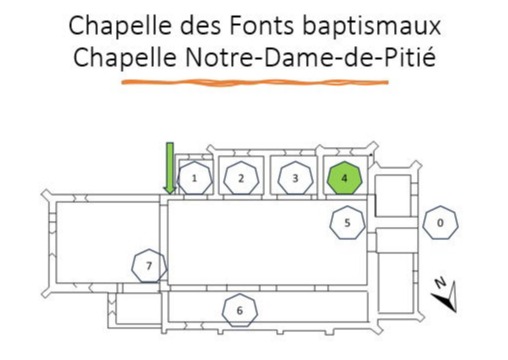
Baptismal Font Chapel
Chapel of Notre-Dame-de-Pitié
You will now discover the 13th-century baptismal font chapel (cf. 1).

You will now discover the 13th-century baptismal font chapel (cf. 1).
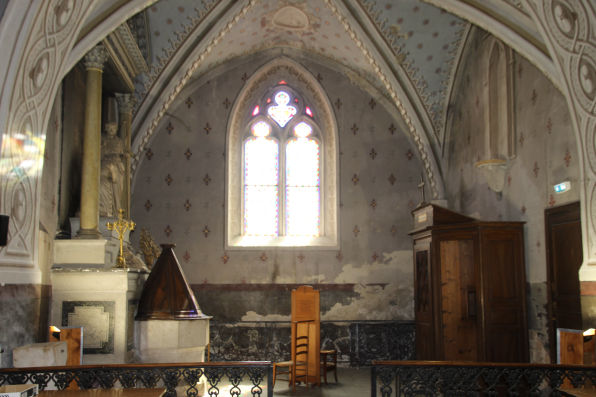
1. 13th-century chapel
It is built in a transitional style between Romanesque and Gothic architecture, as evidenced by the slight break in the arches and their rather massive thickness.
With a width of 5m70 and a depth of 5m80, its vault is 5m95 high.
The varnished cast-iron enclosure features the symbol of the lamb, surrounded by grapes. In the center appears the monogram "AM" in devotion to the Virgin Mary.
The entrance arch is adorned with mural painting motifs.
(see 2 to 4 below)
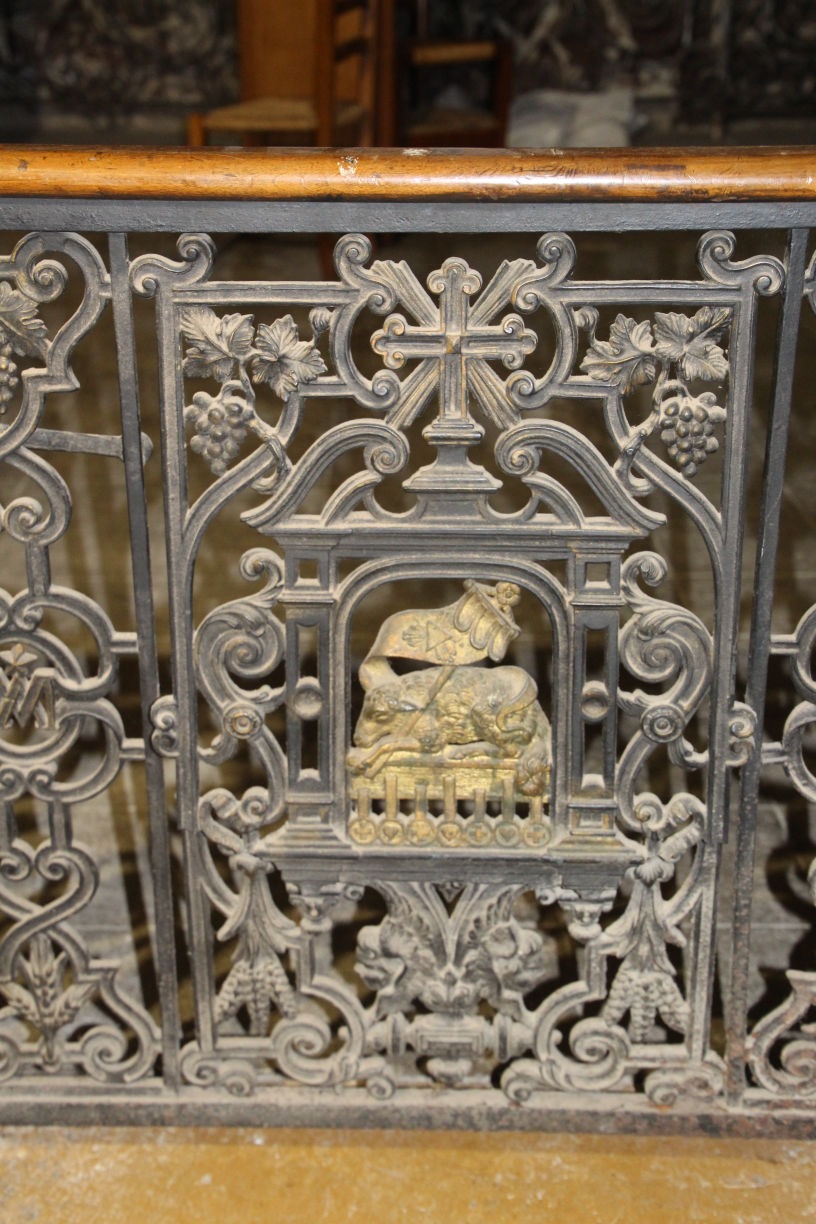
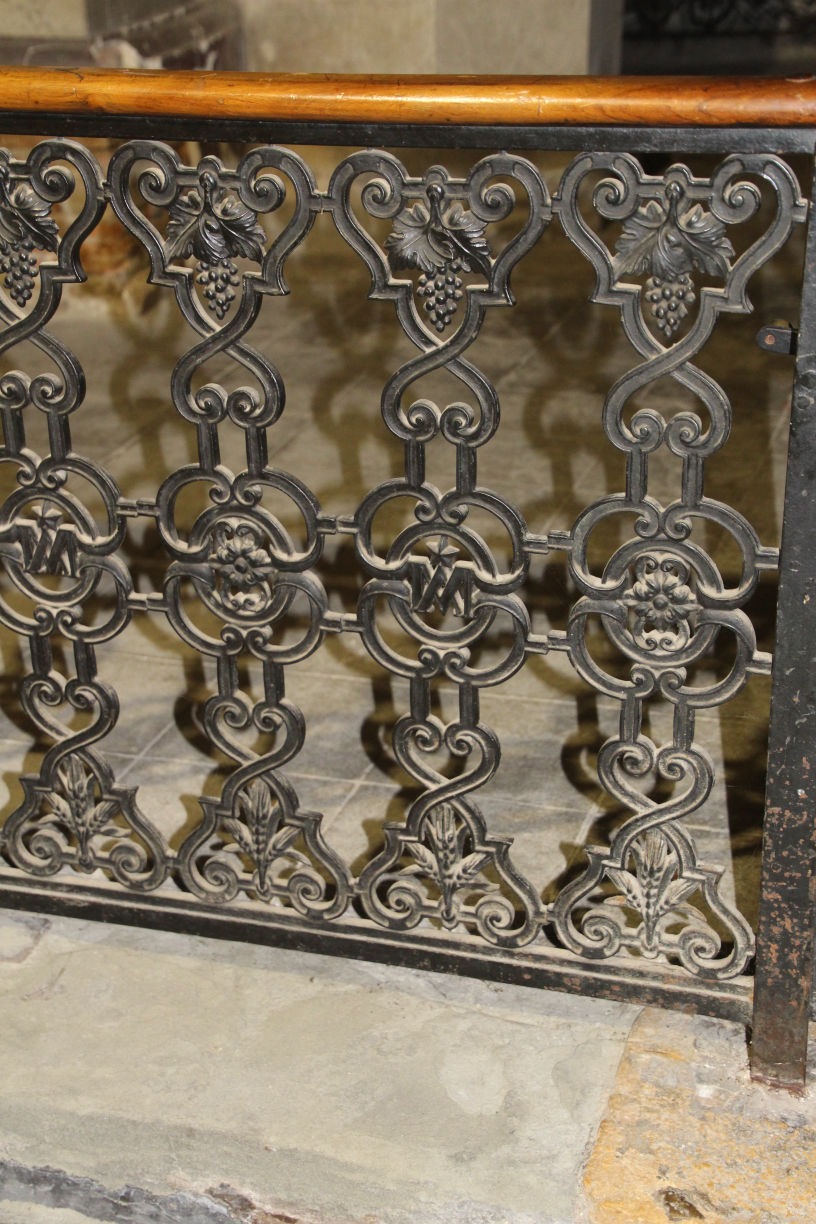
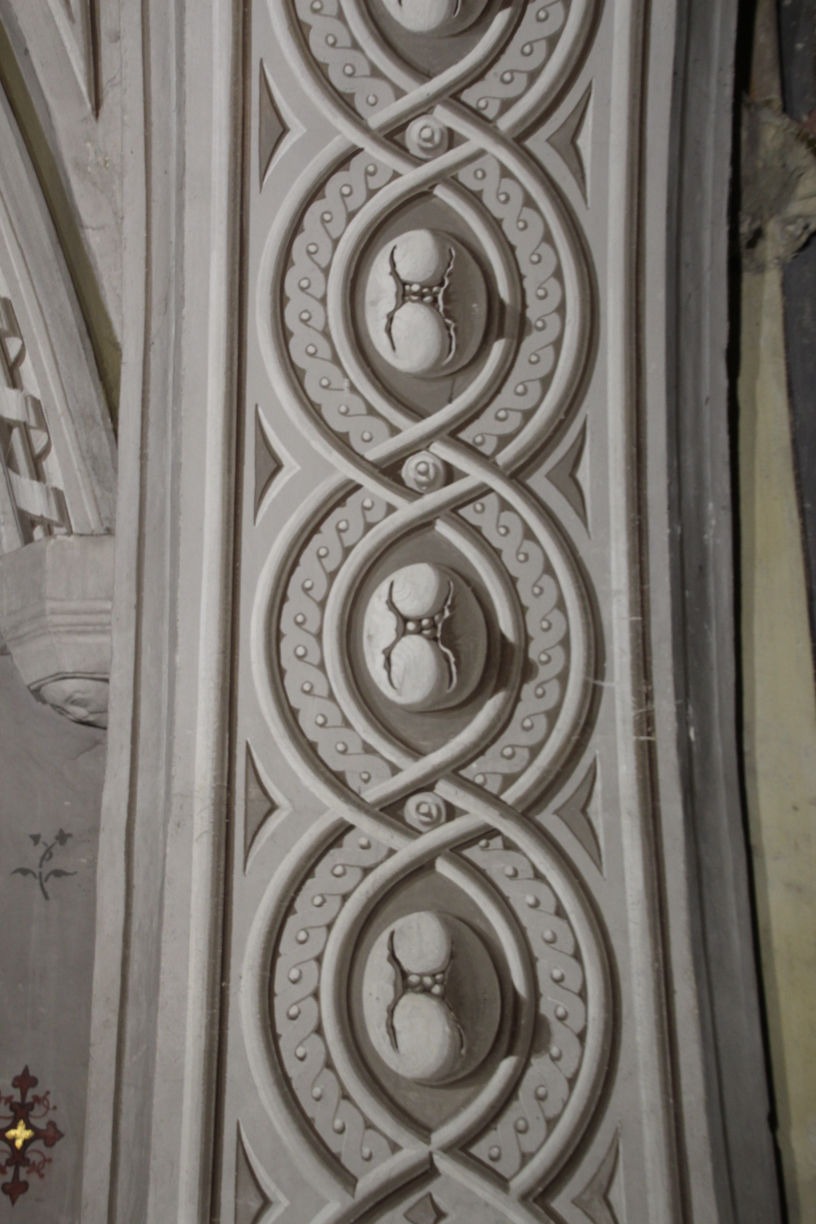
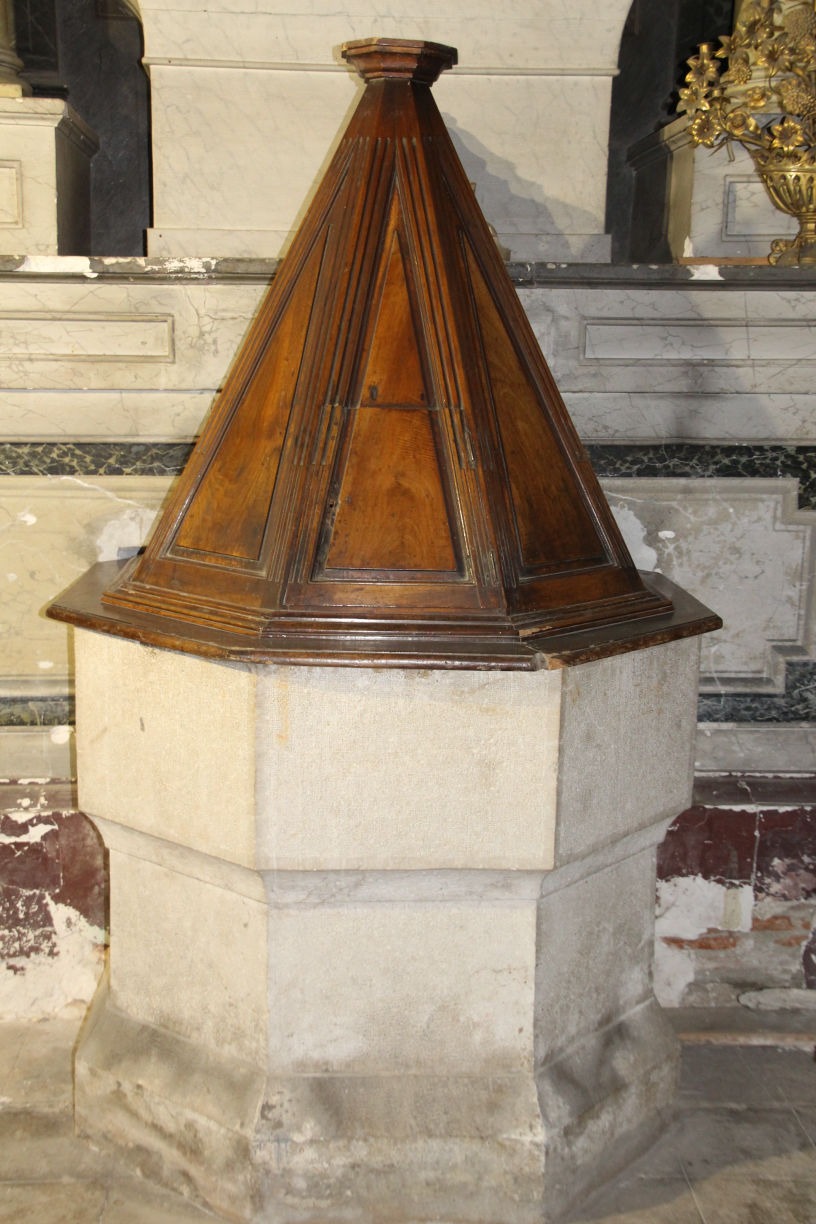
5. Stone Baptismal Font
The baptismal font, in Saint-Gervais stone, was re-cut in 1866. The wooden roof was installed around 1870, following a pastoral visit by the Bishop of Grenoble, who stressed the need for it. (cf. 5)
The altar is made of plaster, brick and wood, treated with faux-marble; it is surmounted by a scene depicting the baptism of Christ by John the Baptist (cf. 6).
The pediment features the monogram "AM" for Ave Maria. The medallion is framed by braids of vegetables and fruit. Close observation reveals compositional differences between the left and right sides of the medallion. The column capitals are also very elaborate. (cf. 7 to 11)
A Chrism adorns the base of the candelabra placed on the altar (cf. 12).
The stained-glass window is in the same style as the one in St. Joseph's chapel, made by Gubian et Roy-jeune, master glassmakers in Lyon.
(cf. 13 below)
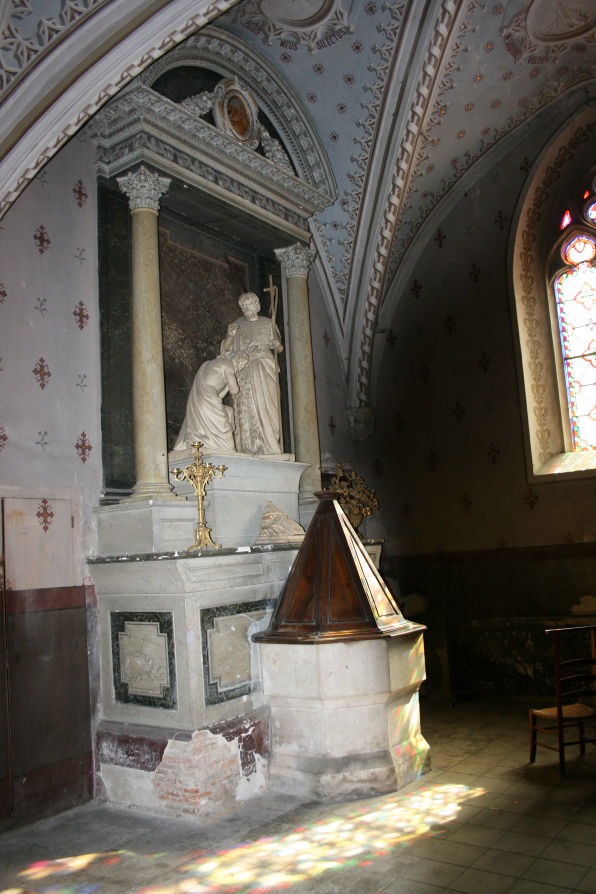
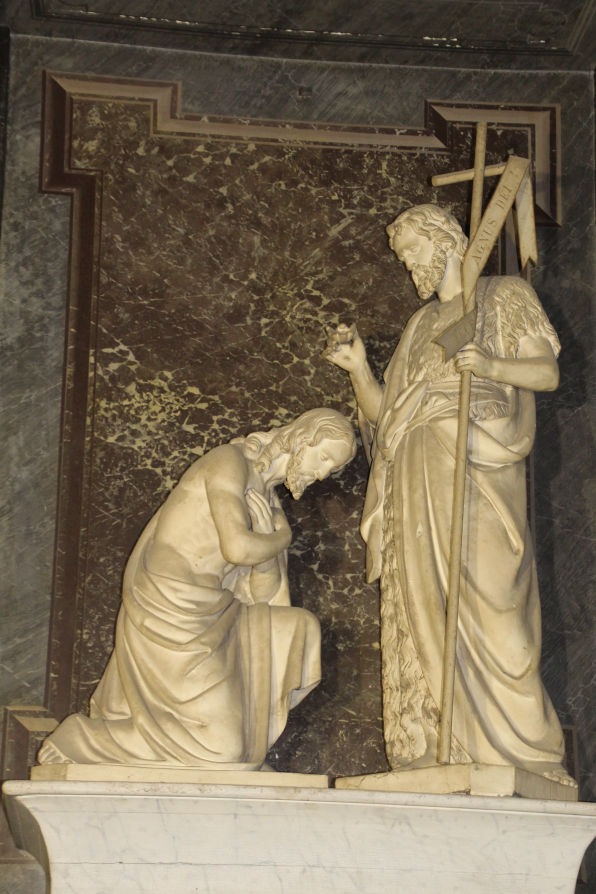
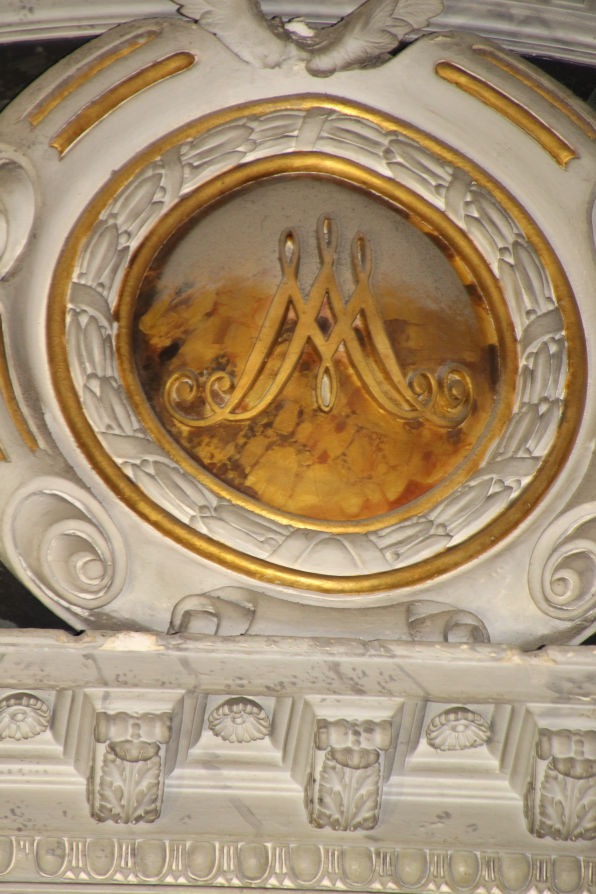
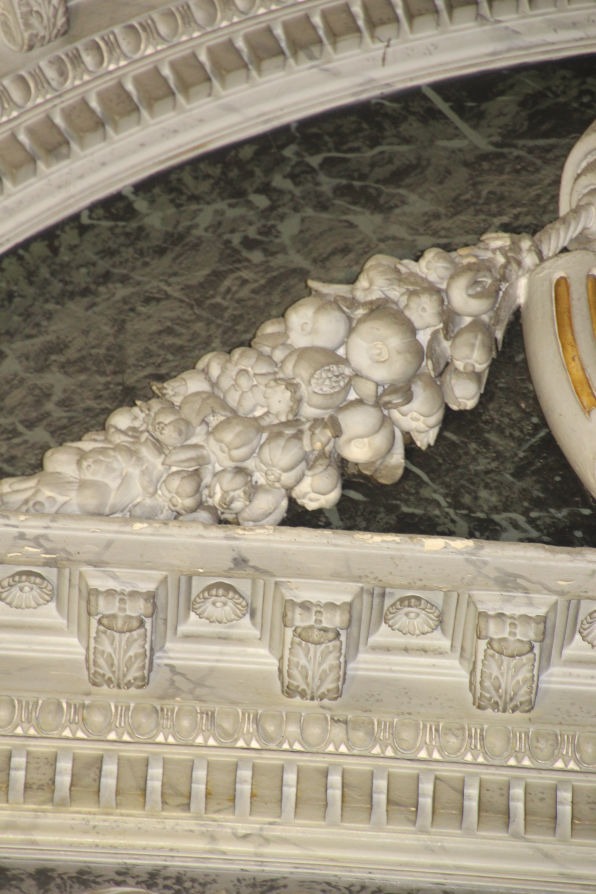
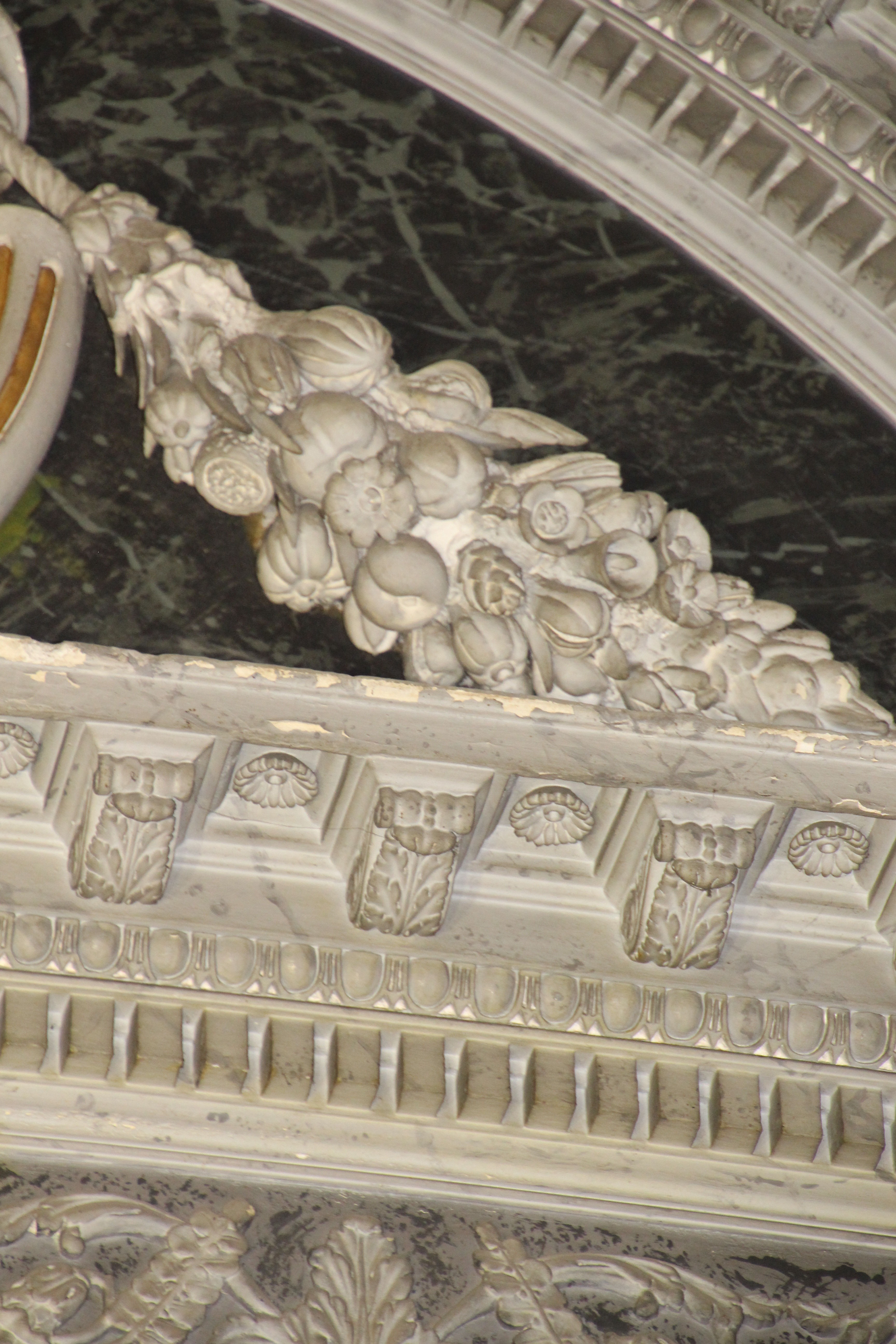
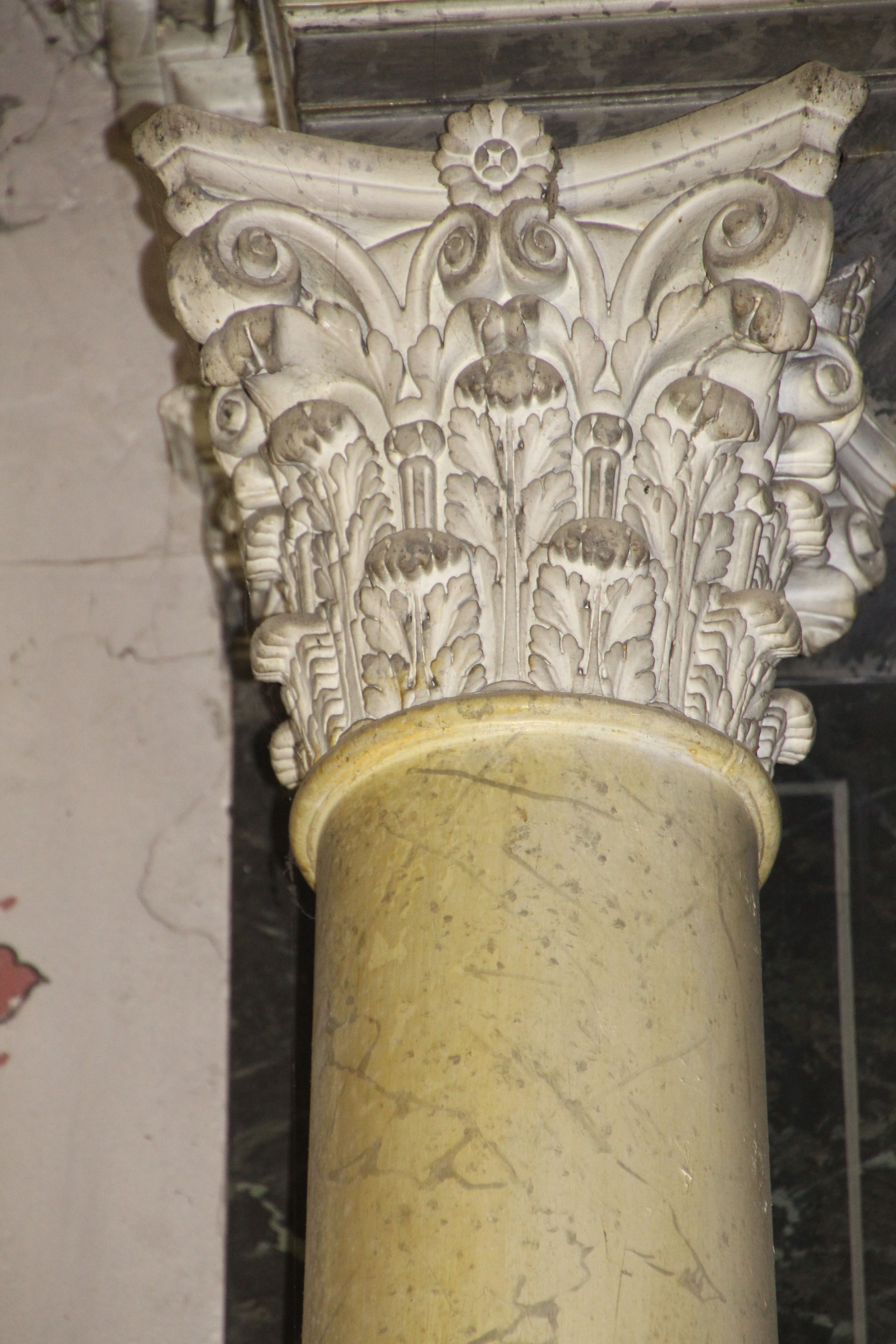
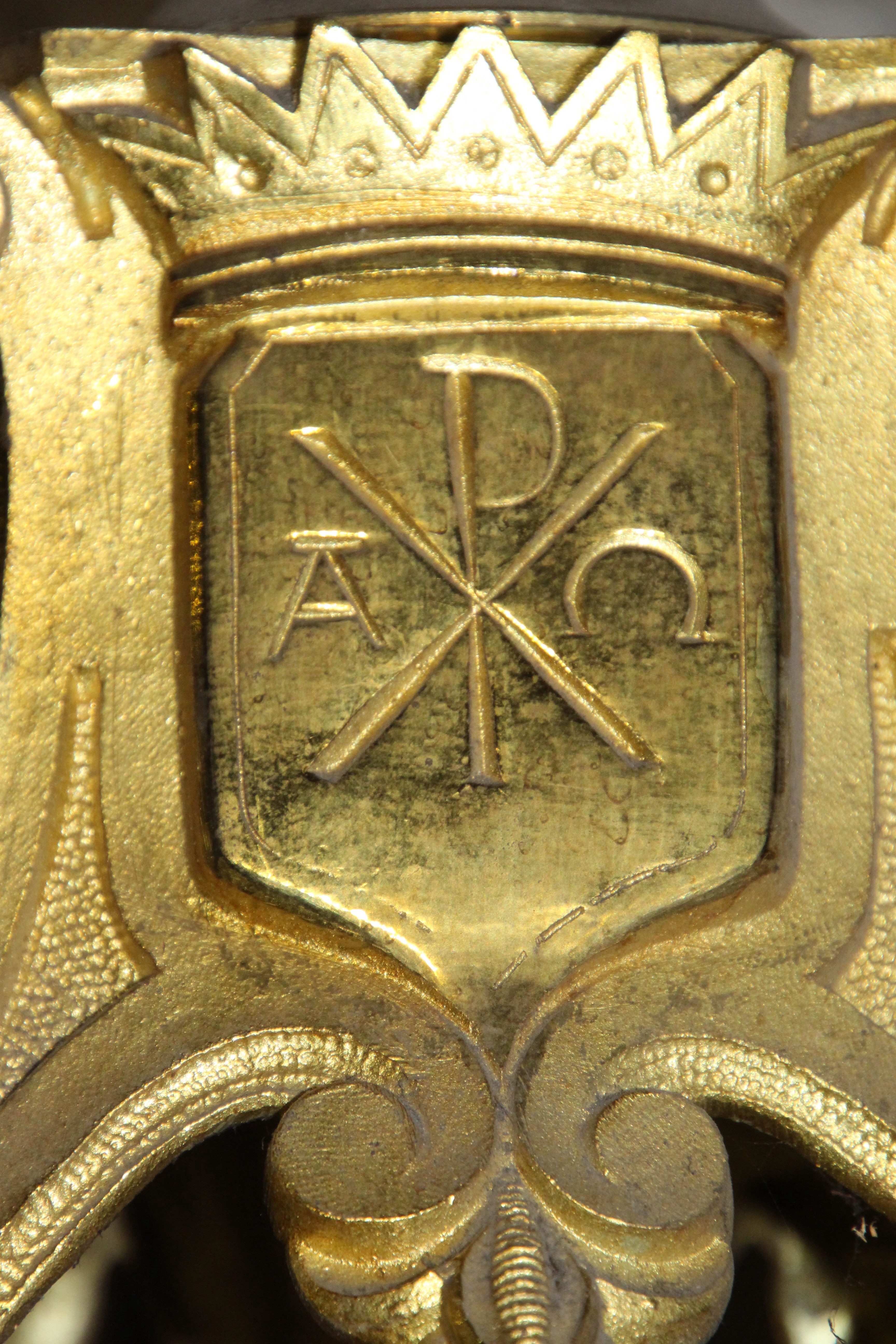
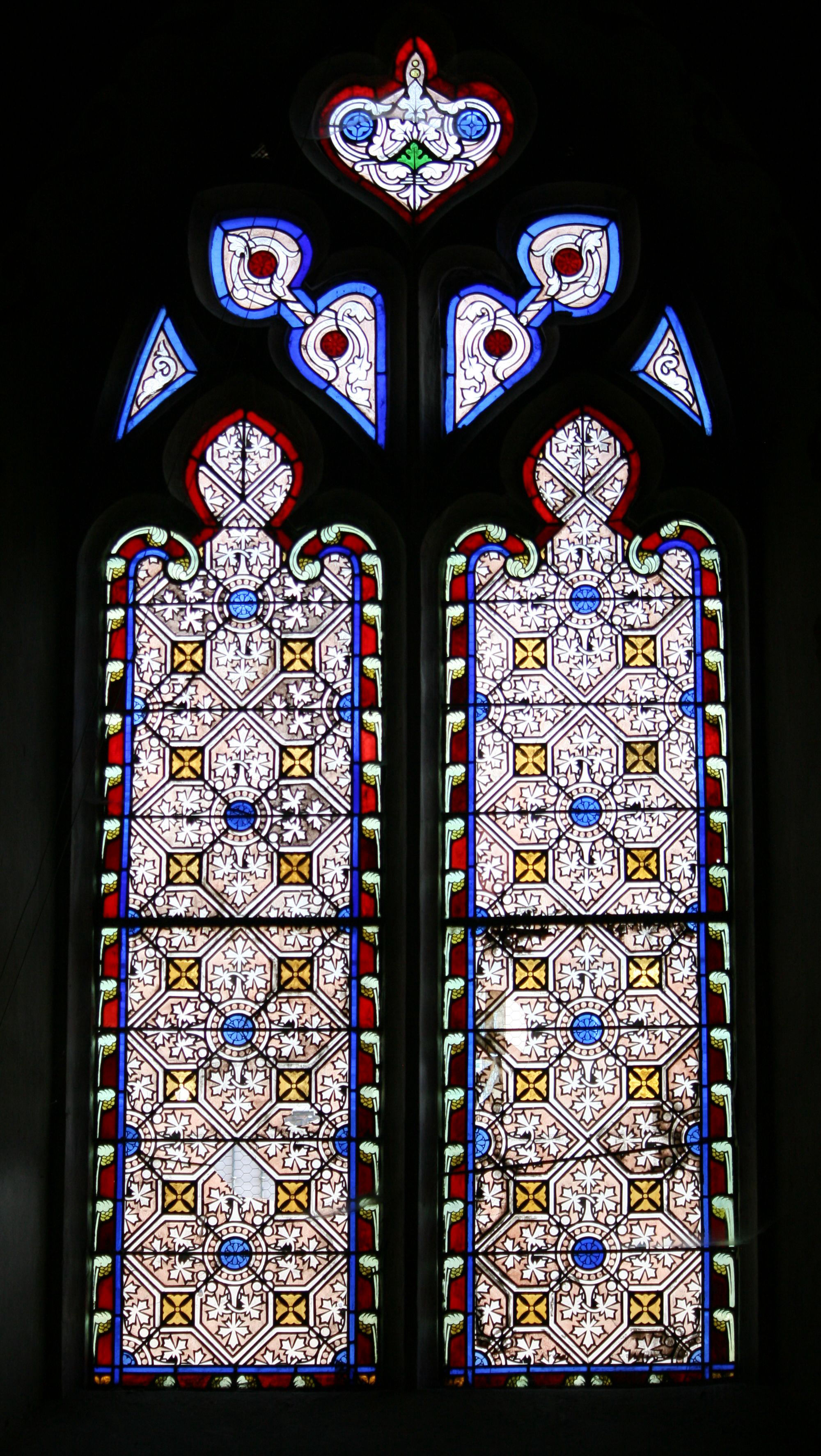
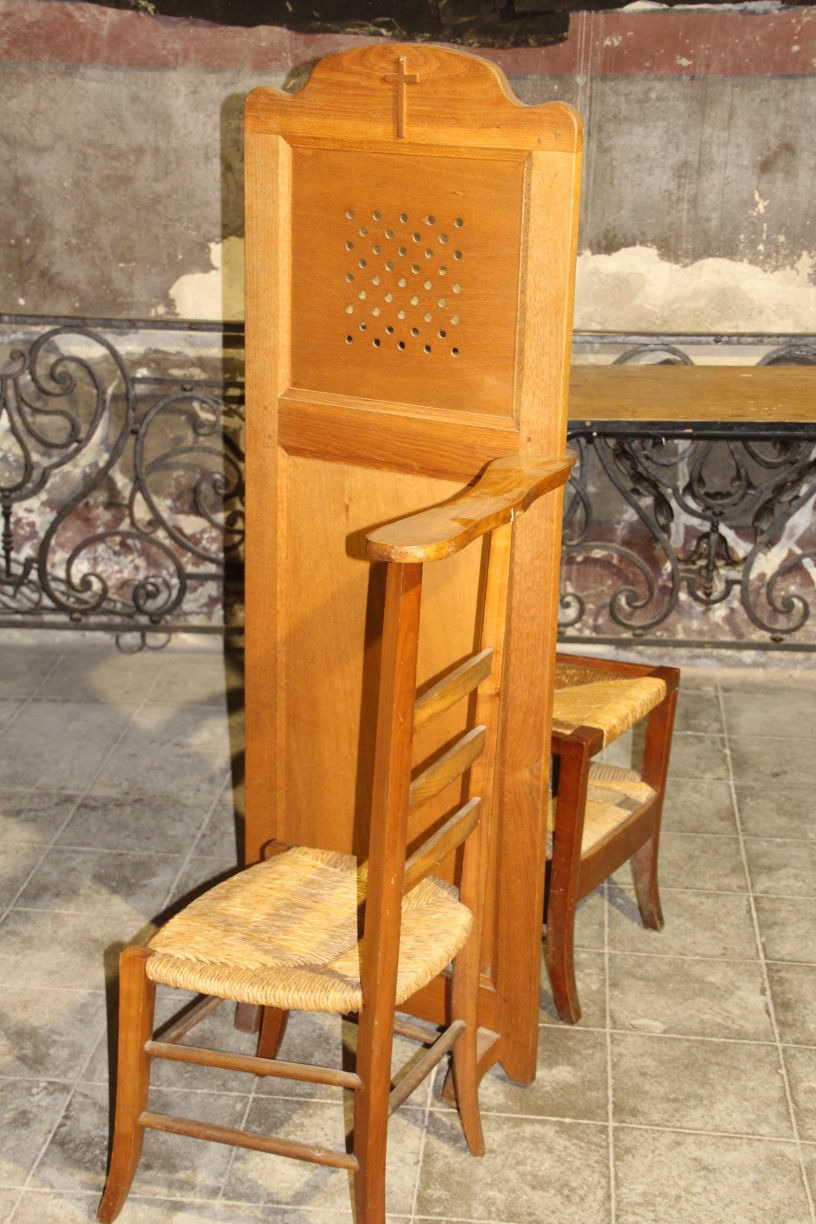
14. Portable confessional
In the 19th century, the parish priest would confess the sick at home. For this purpose, he would bring a portable confessional. Every church was equipped with one, but very few remain today. (cf.14)
Along the wall, a more classical confessional dates from the same period (cf.15).
The ceiling is yet another example of the skill of 19th-century painters.
The decoration softens and refines the rusticity of the architecture.
Each ceiling panel is adorned with a medallion bearing a motto. Here, death is surrounded by the sentence: "Thou shalt make thy bread by the sweat of thy brow", while the adjacent panel depicts a dove and the motto: "This is my beloved son". The tree of knowledge and the tempting serpent are illustrated by the phrase: "the serpent deceived me and I ate [of the forbidden fruit]"; finally, a fountain illustrates the baptismal motto: "you must be born again".
(cf. 16 to 20 below)
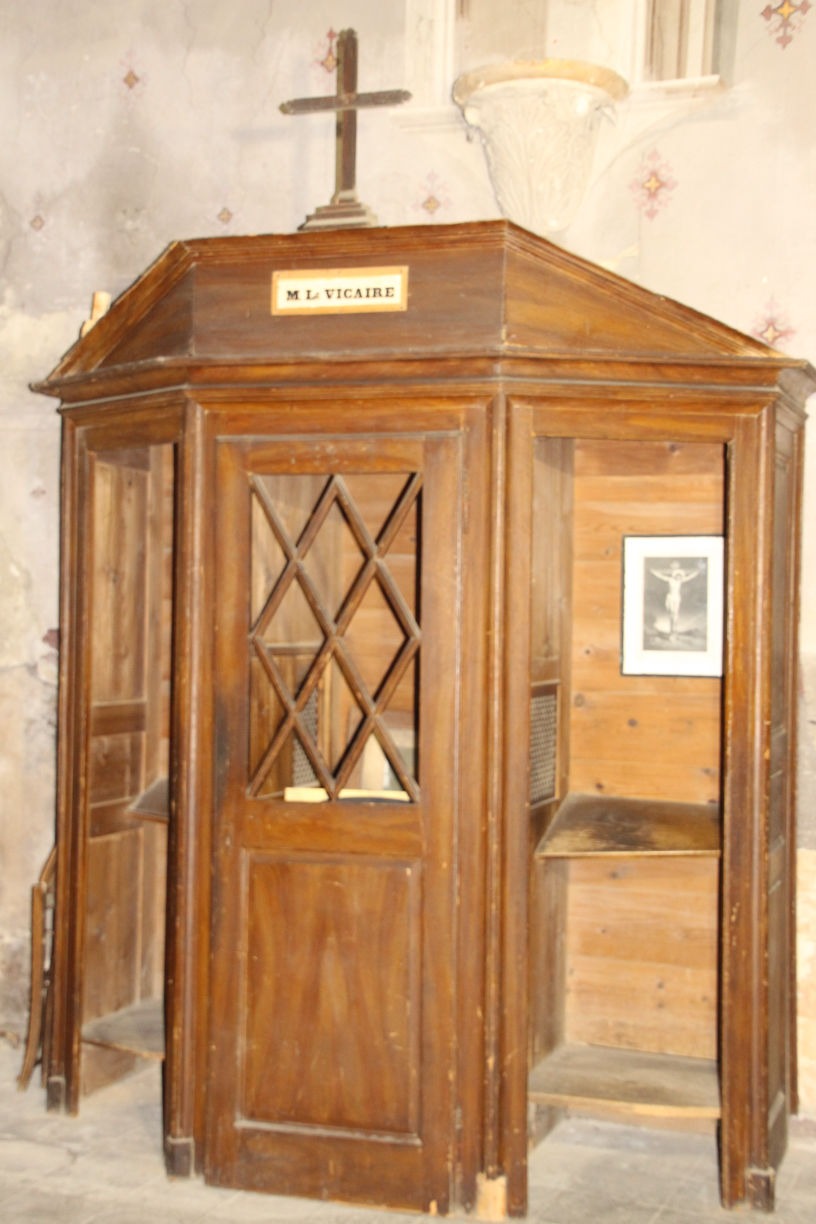
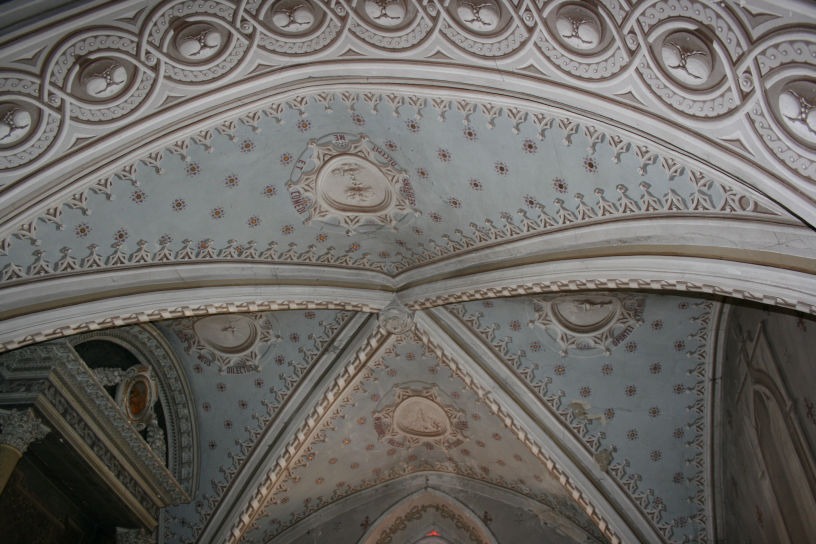
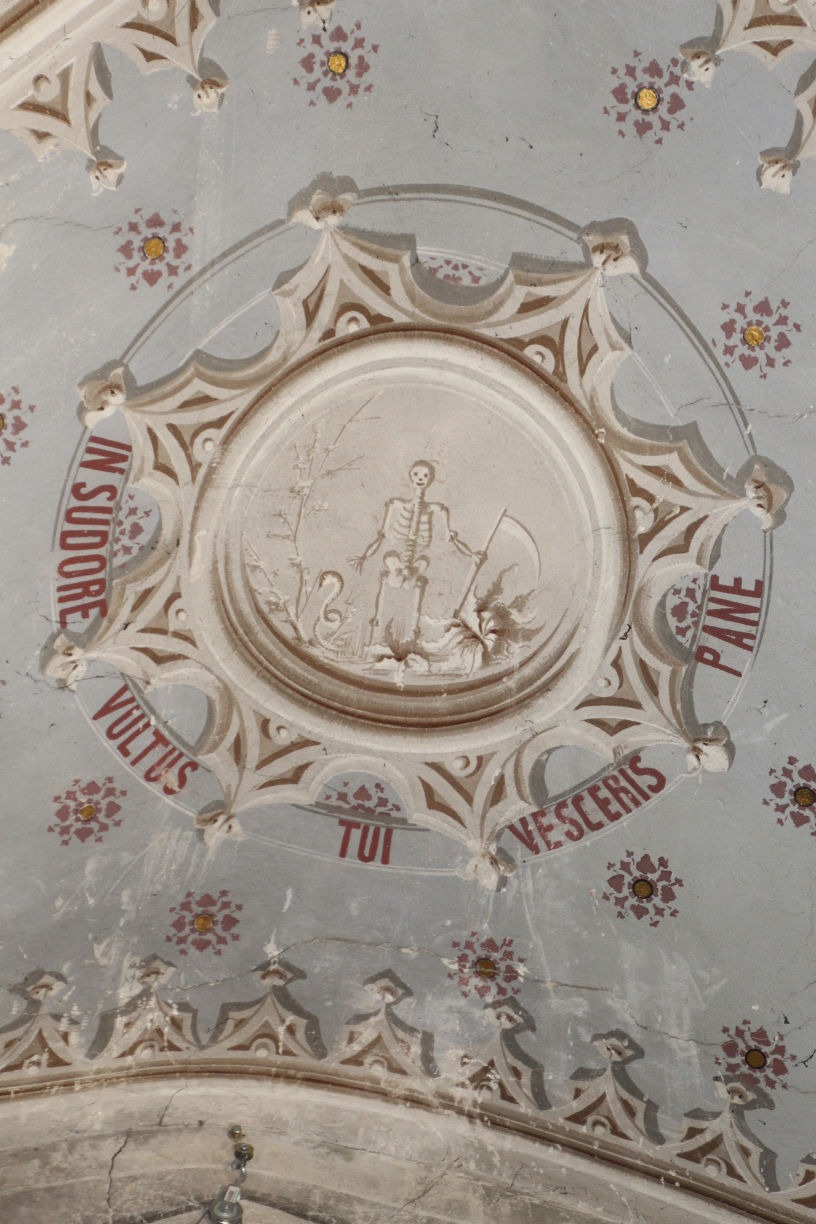
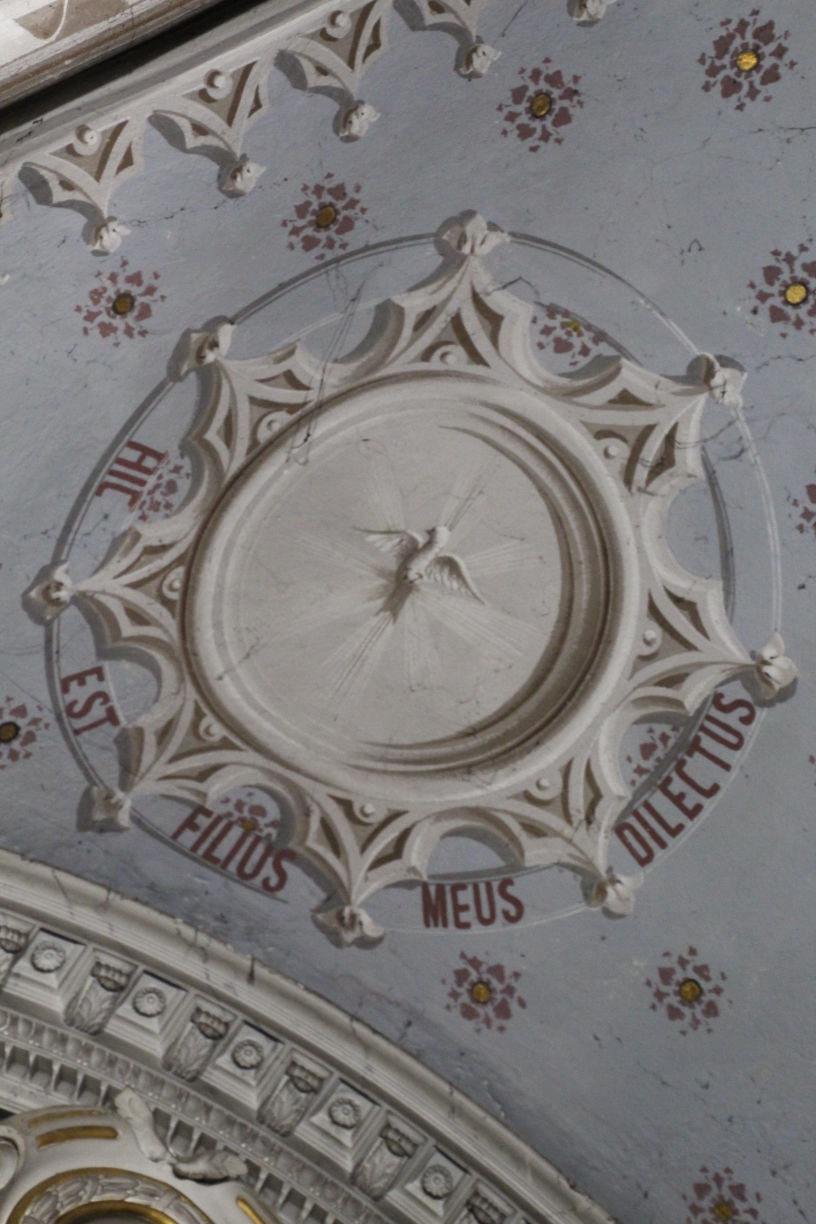
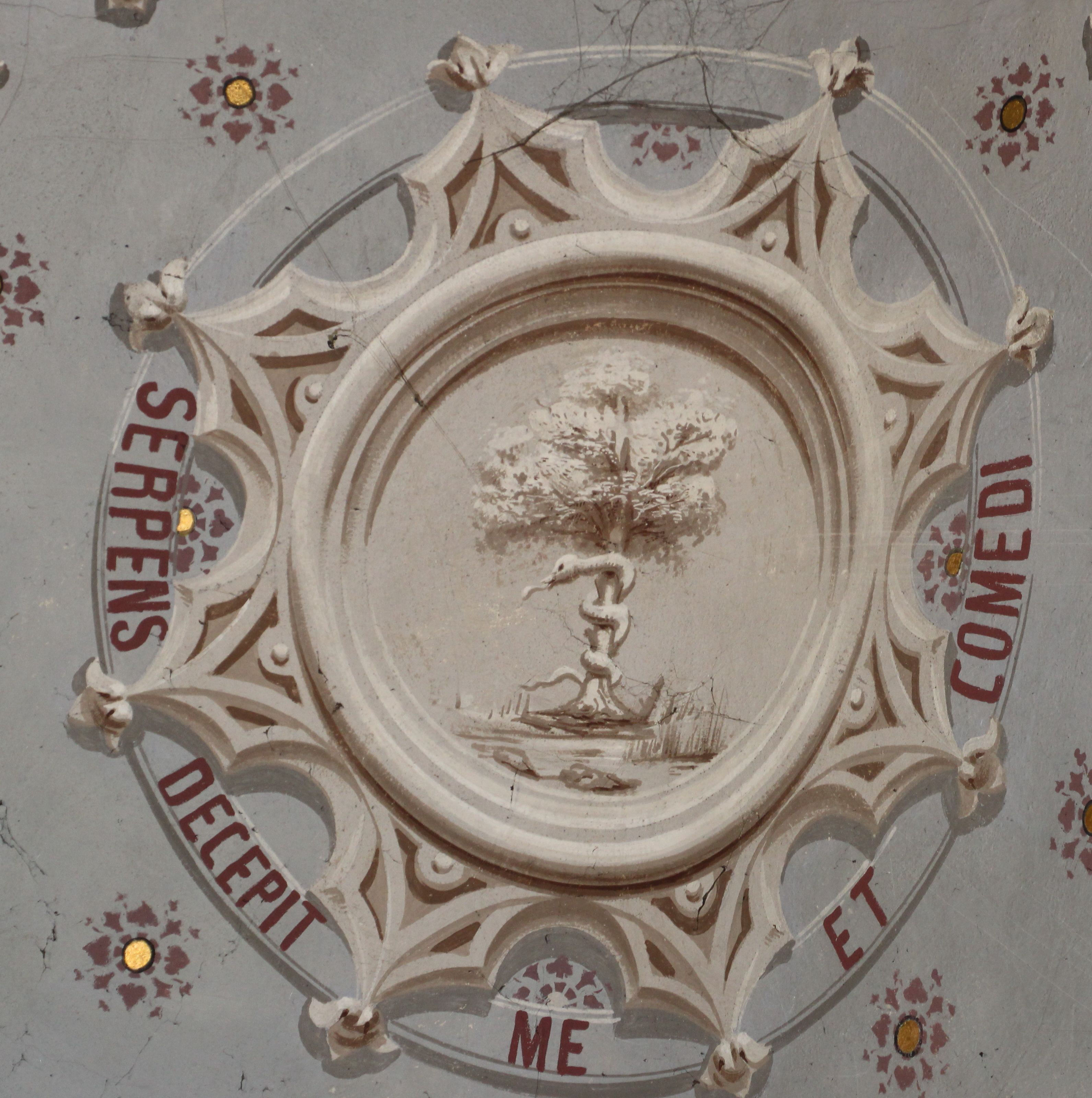
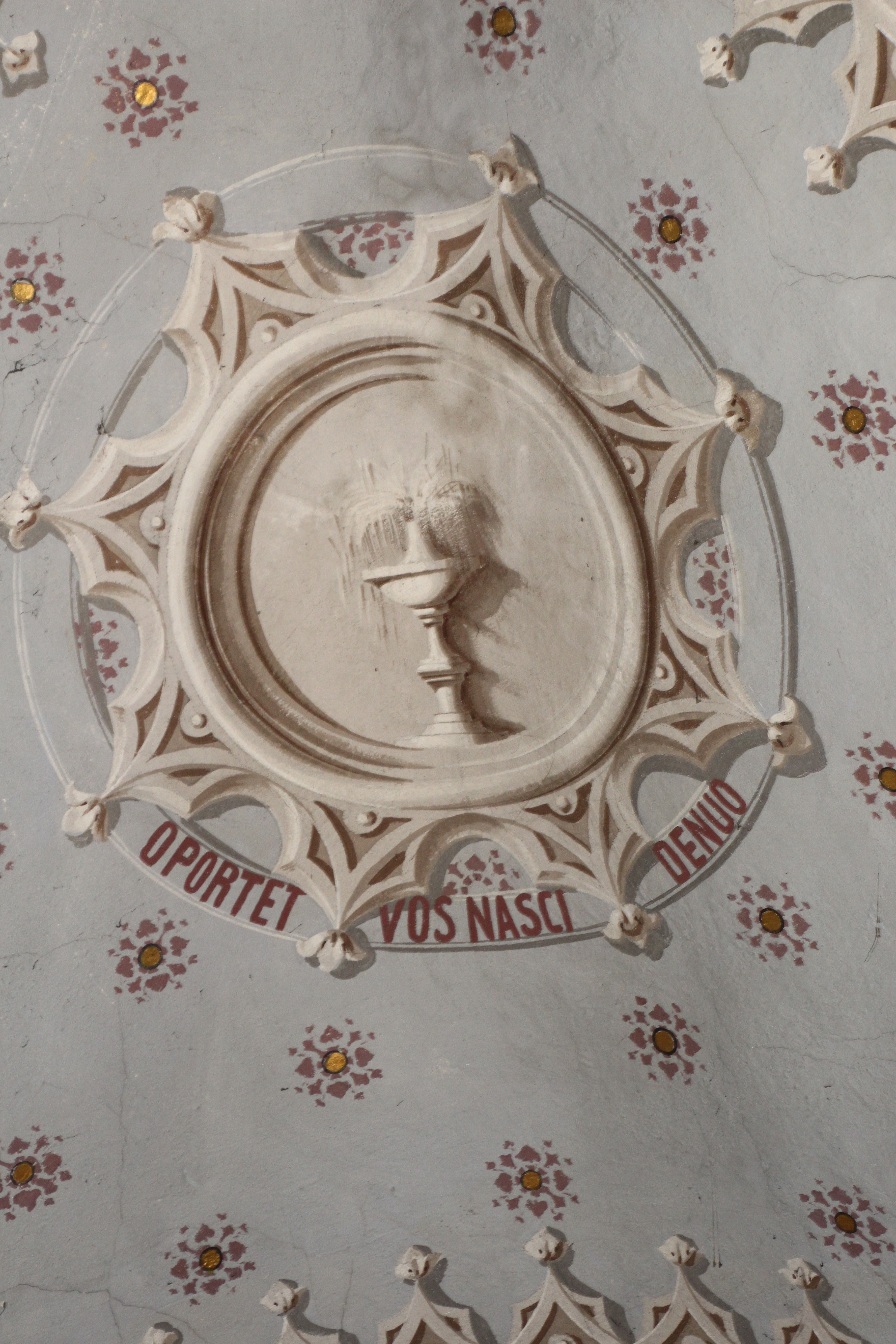
The vaults rest on rusticated abutments, dating the chapel to the end of the 13th century. Some had to be restored in 1866, having been damaged during the Wars of Religion or the French Revolution. Some represent complete figures, others just a face. (cf. 21 to 23)
Facing the altar, the wall is covered by a trompe l'oeil niche and the base of a statue, no longer in existence (cf.24).
The cross stored in the corner of the chapel was originally installed outside the church, on an existing plinth (cf.25).
Opposite the altar, the door leads to the Notre-Dame-de-Pitié chapel, which is only open during guided tours.
Nevertheless, we offer a glimpse of its contents.
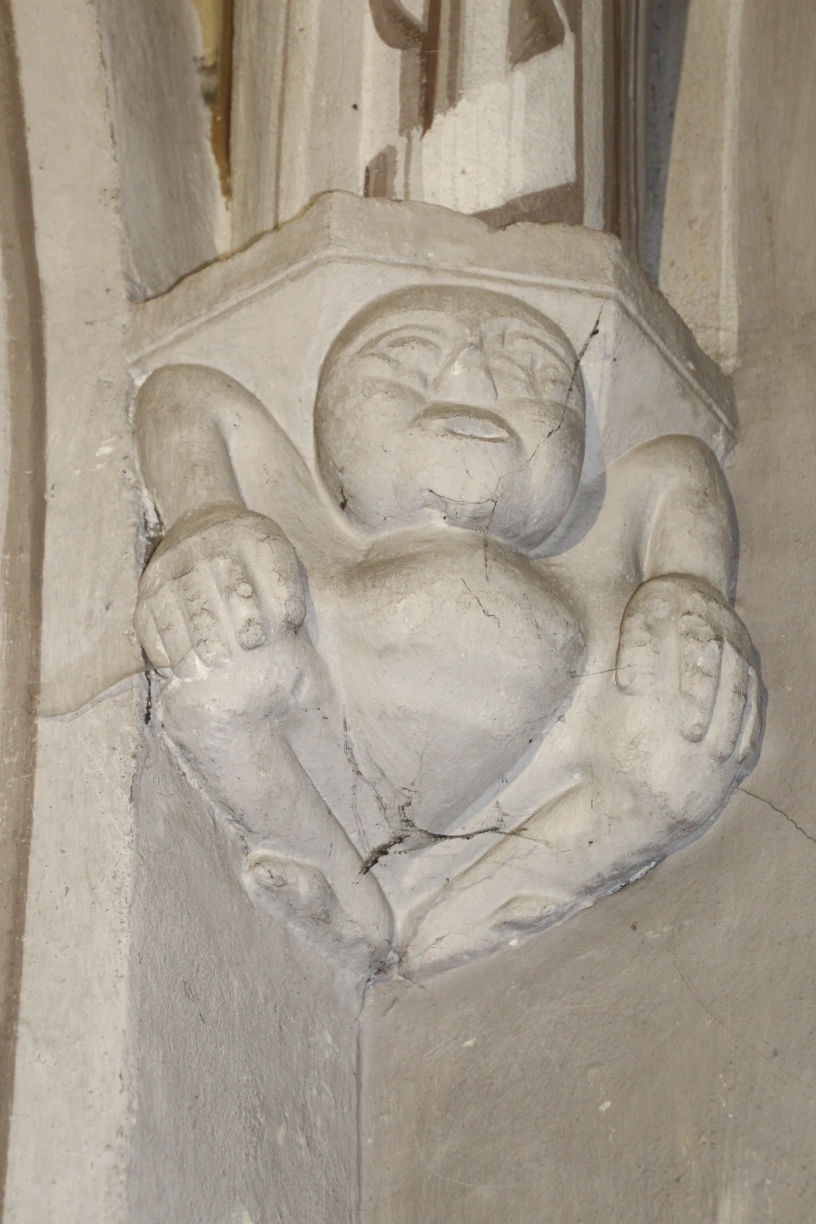
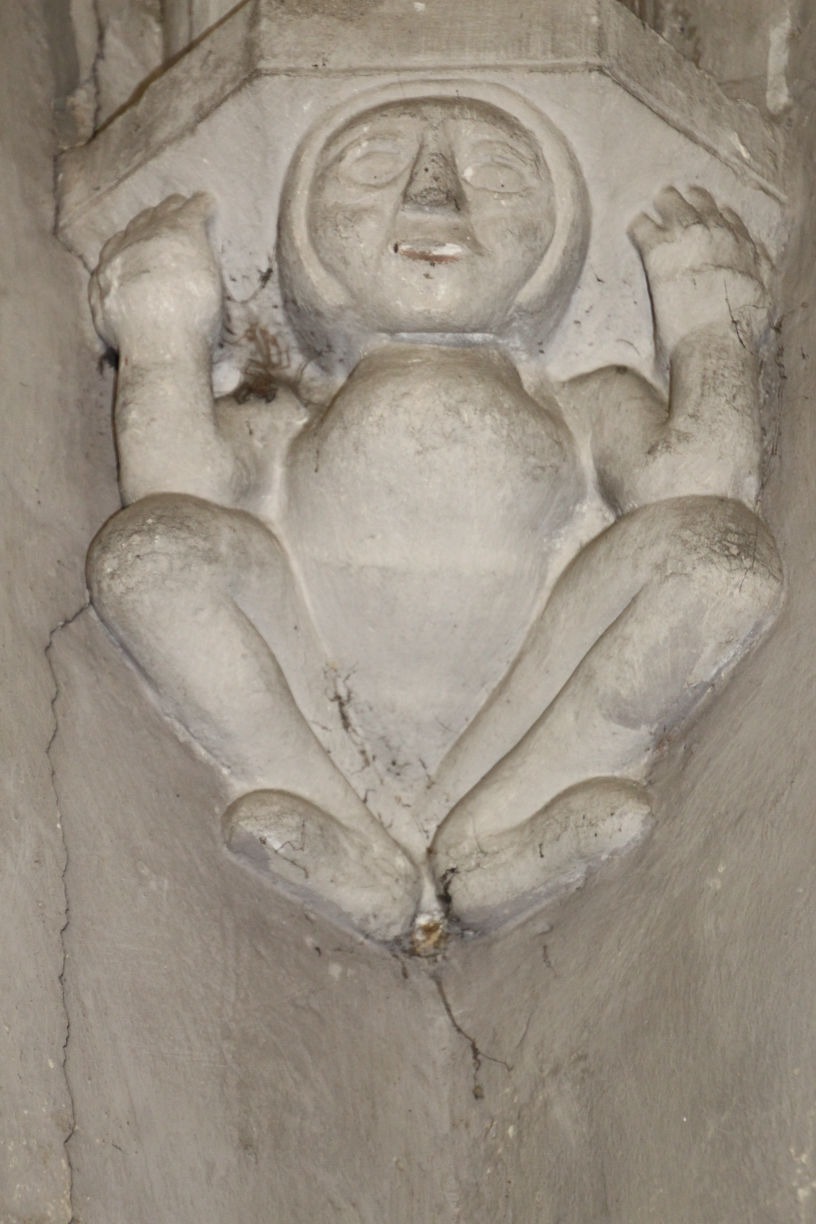
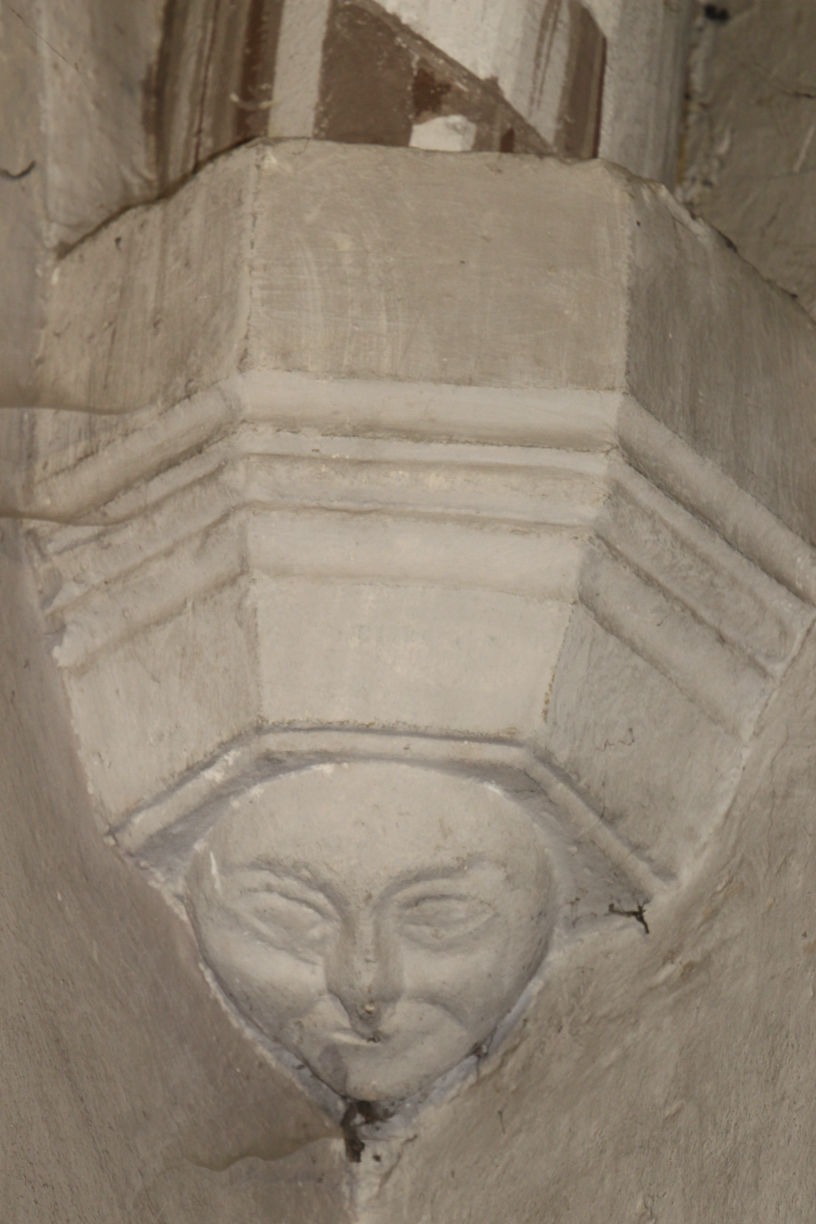
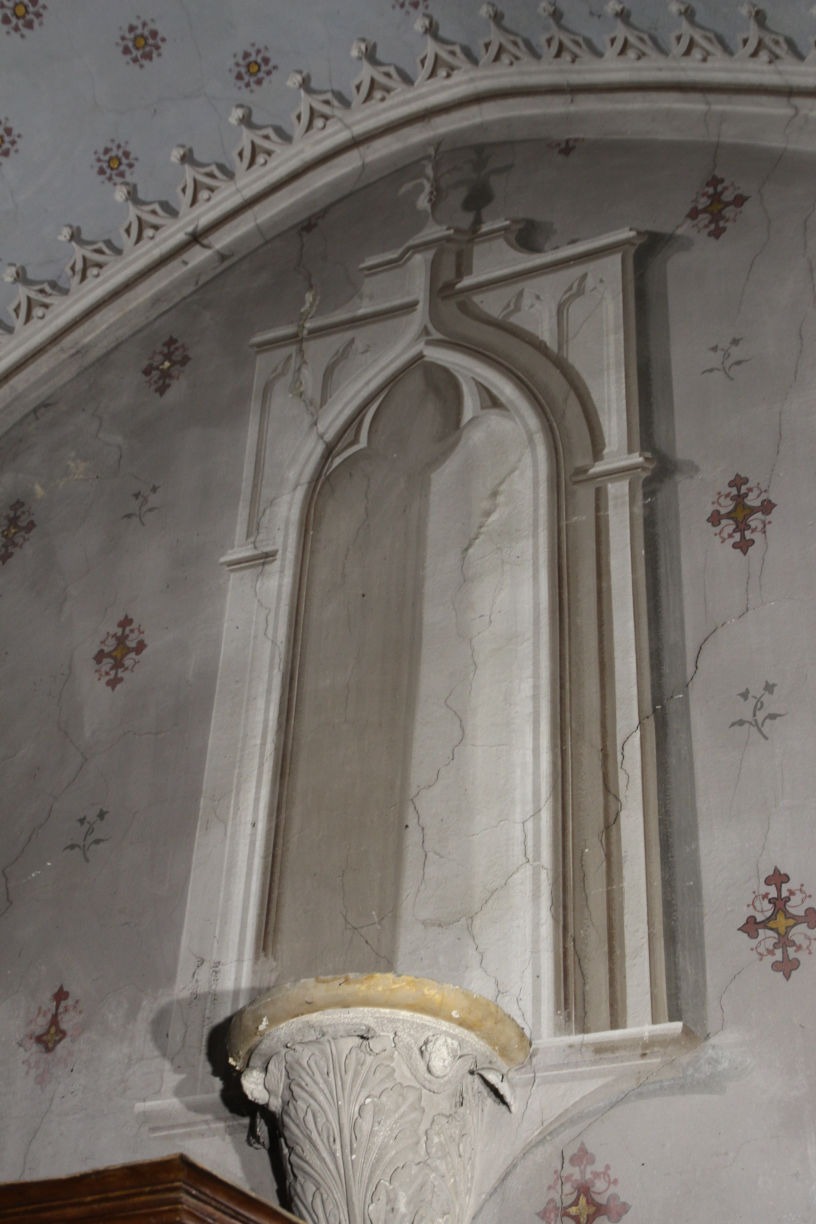
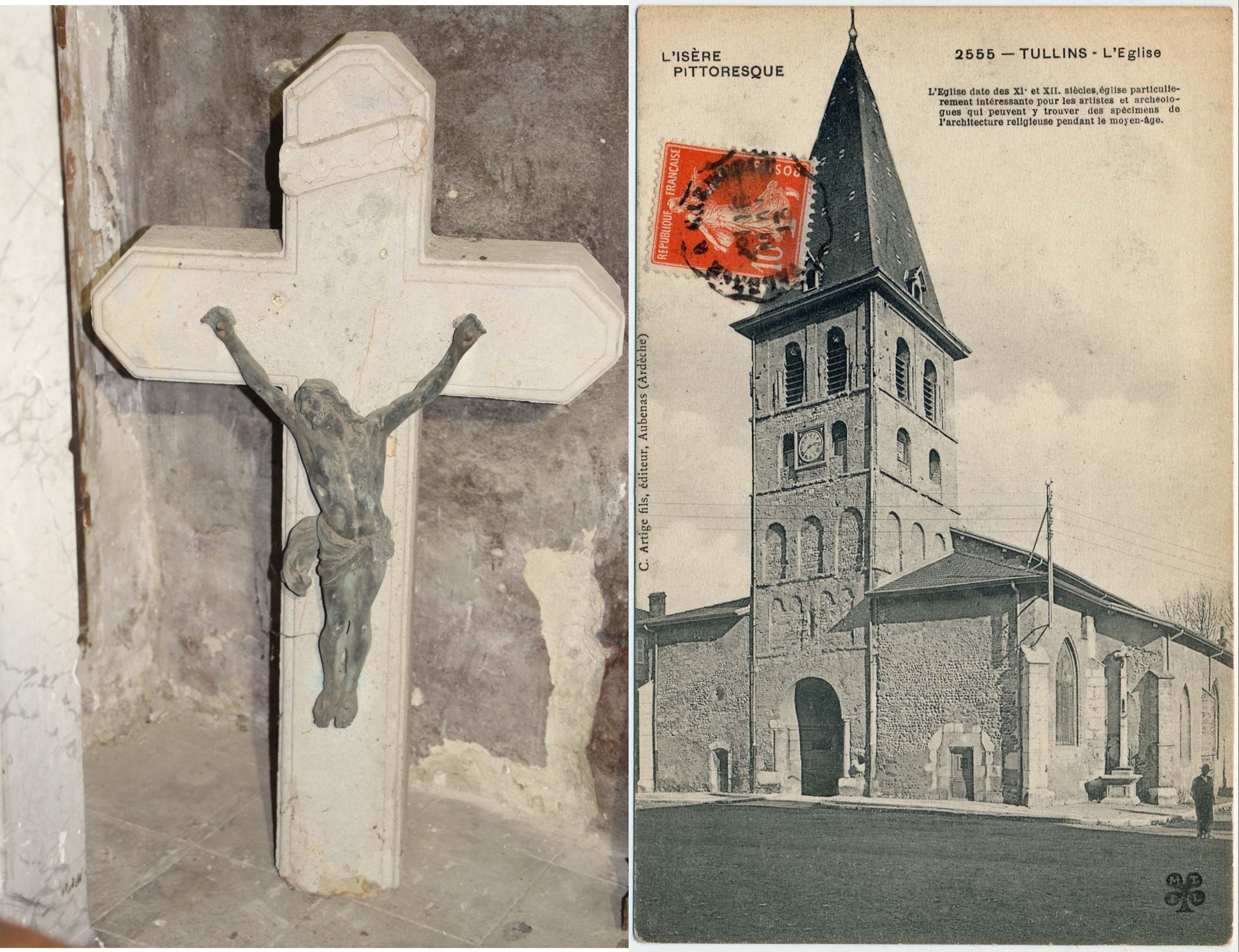
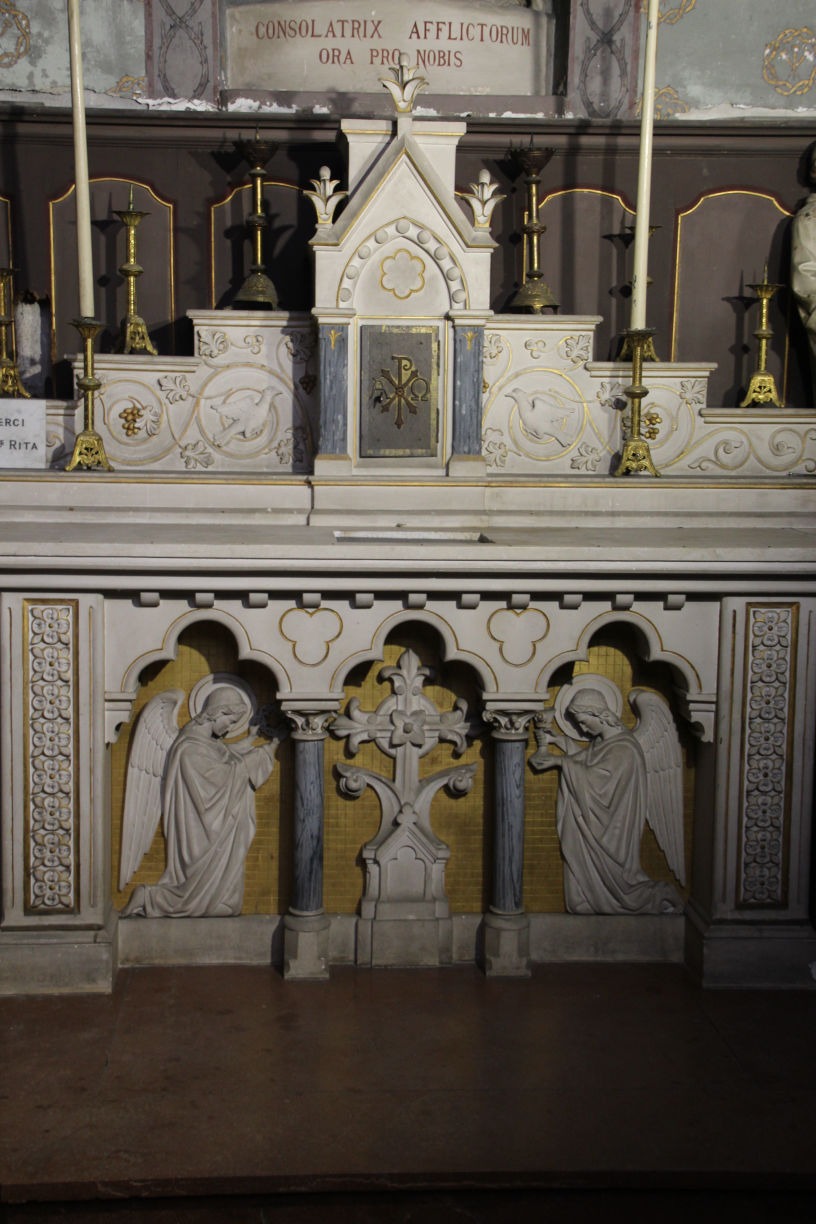
1. The altar of the Notre-Dame-
de-Pitié chapel
After their arrival in 1109, the Benedictines modified the bell tower and began rebuilding the church by building the Notre-Dame-de-Pitié chapel, which dates from the late 12th - early 13th centuries.
It features a finely-worked altar (cf.1).
The altar tomb is adorned with a bas-relief on a gold mosaic background, the first divine color. Later, this color was replaced by blue, representing both divine light and the color of heaven, a combination we find again in the body of the church (cf. 2).
On the tabernacle door, the Chrism, Christ's monogram, is formed by the Greek letters Χ (khi) and P (rhô), the beginning of the word "Χριστός" meaning Christ, framed by the Alpha and Omega (cf. 3).
On either side are bas-reliefs of doves, and bunches of grapes.
(cf. 4 below)
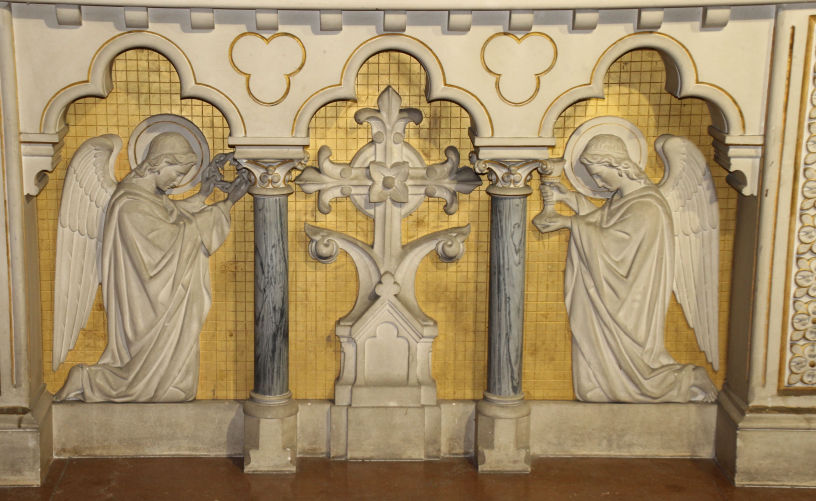
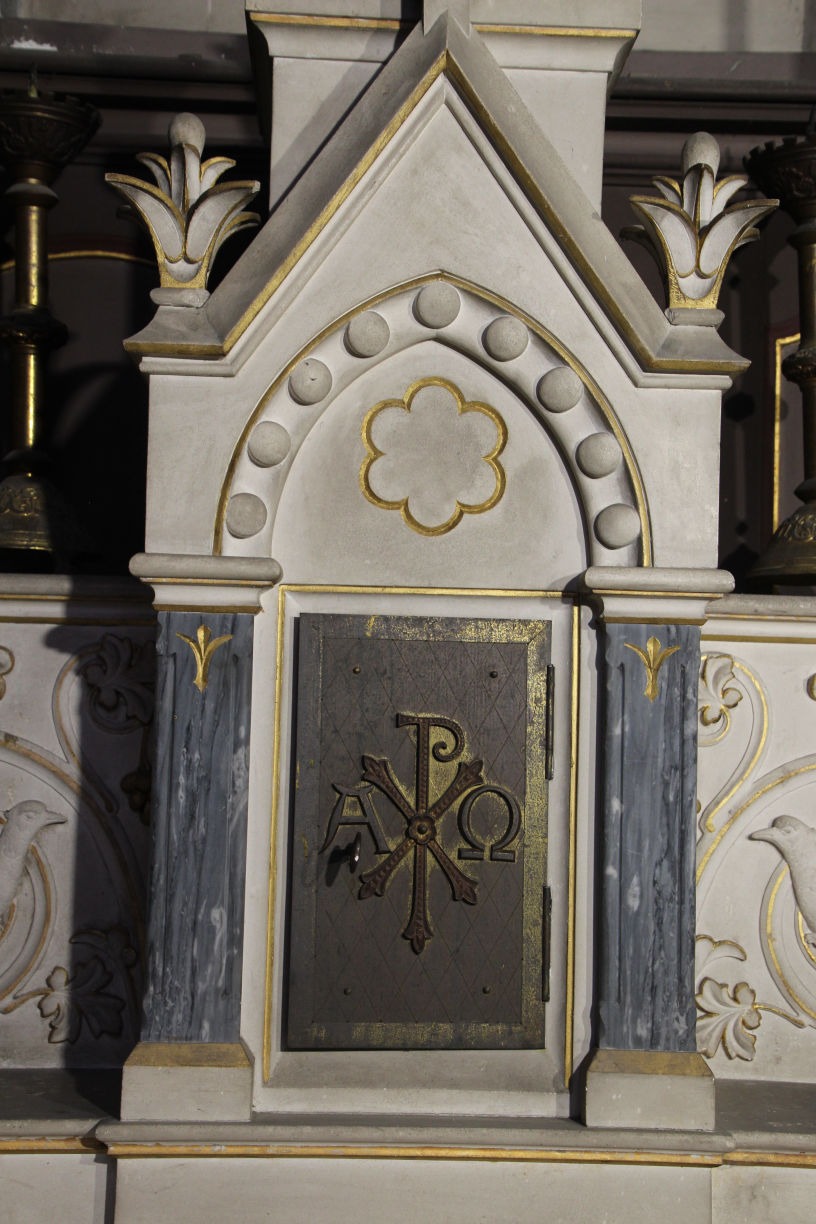
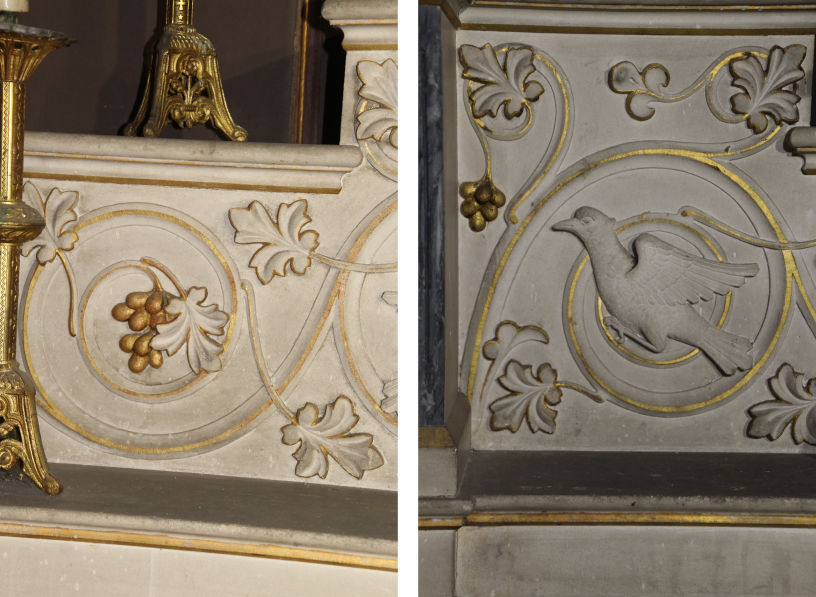
Above the altar, a pietà depicts the grieving Virgin Mary supporting the dead Christ on her knees. The motto on the base reminds us of her role as consoler of the afflicted. The difference in style between the Virgin's face, which is quite fine, and Christ's coarser features, suggests that the statue has been damaged and one of its parts redone. Popular tradition recounts an attempt to tear down the statue during the French Revolution.
Resisting human force, it broke when oxen were used to pull on ropes, but the base remained in place. Legend or reality, we don't know...
Above the statue, we find the monogram Ave Maria, surrounded by stars.
(see 5 to 8 below)
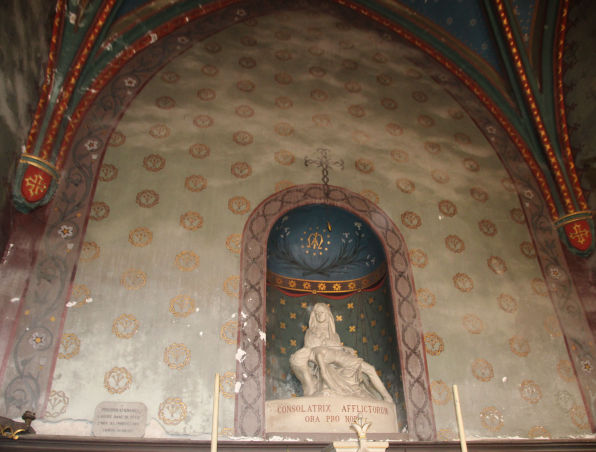
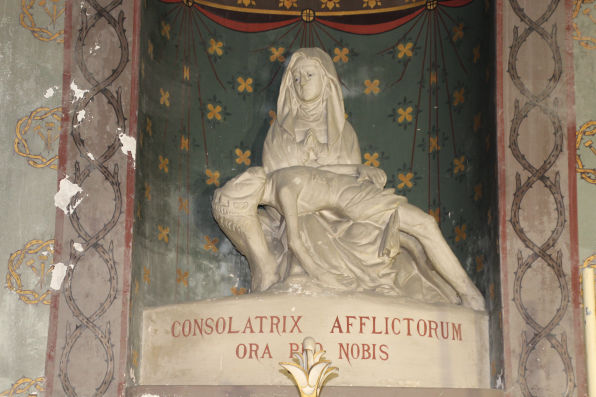
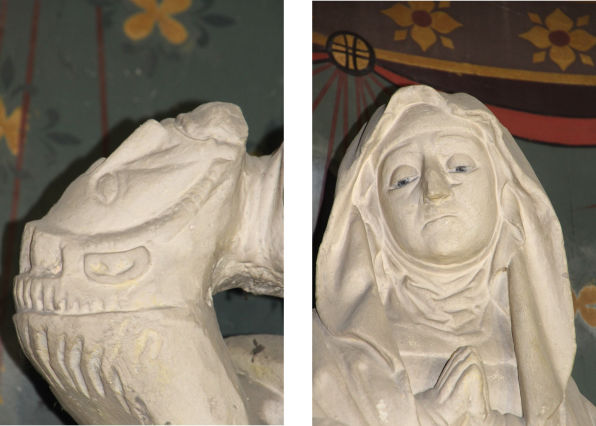
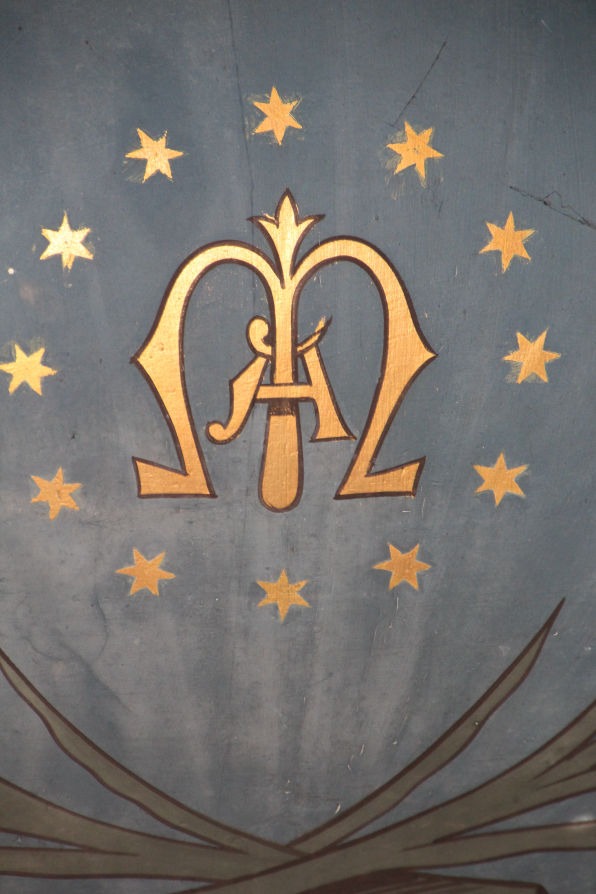
The chapel features several statues: the Virgin Mary, Saint Anne, mother of the Virgin Mary, educating her, and Jean-Baptiste de la Salle, founder of the Brothers of the Christian Schools (Frères des Ecoles Chrétiennes), who taught the majority of Tullin's children in the 19th century (cf. 9 to 11).
The statues of Saint Joseph and the Virgin were installed on private land purchased by a developer (cf. 12). He donated them to the association "Sauvegarde de l'église Saint-Laurent-des-Prés" to ensure their preservation. They date from the second half of the 19th century and were the object of processions until the mid-20th century. Note the unusual depiction of Jesus as a child.
The history of the statue of Jesus descended from the Cross, and the significance of the coats of arms supporting the arches of the chapel's vaults, have yet to be explained (cf. 13).
Opposite the altar, a two-pane stained glass window depicting scenes from the Passion of Christ illuminates the chapel.
The vault, painted in 1866 in a luminous blue, shows a remarkable alignment of stars, a result difficult to achieve on the assembly of curved surfaces making up the vault.
(cf. 15)
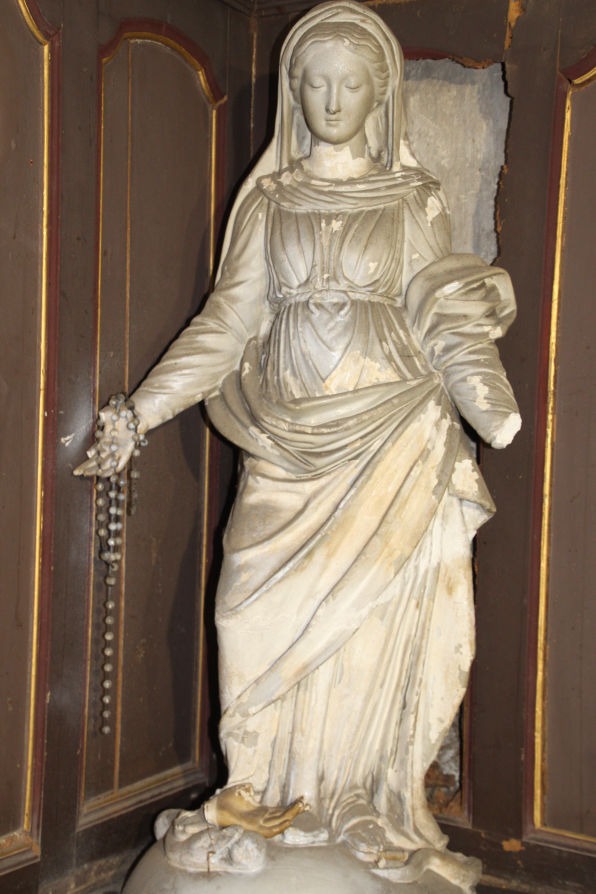
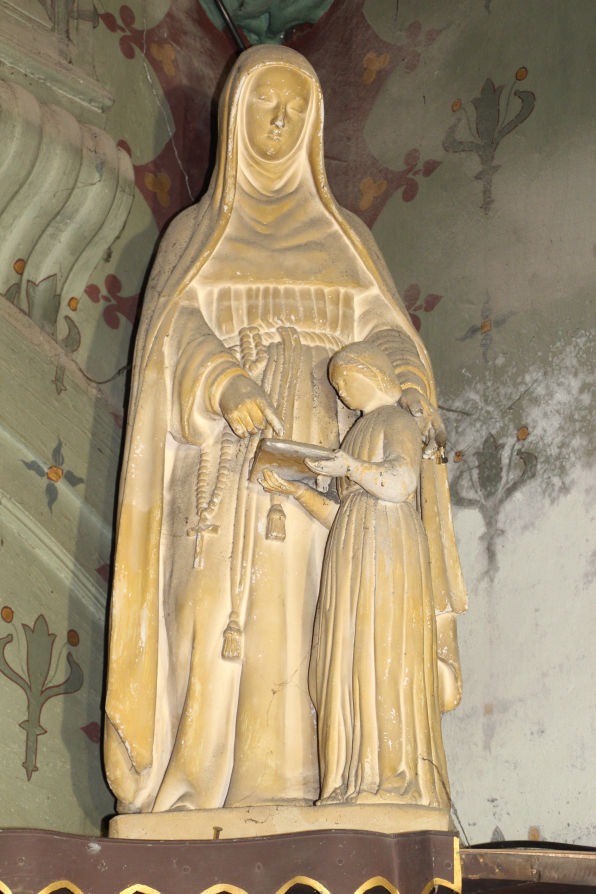
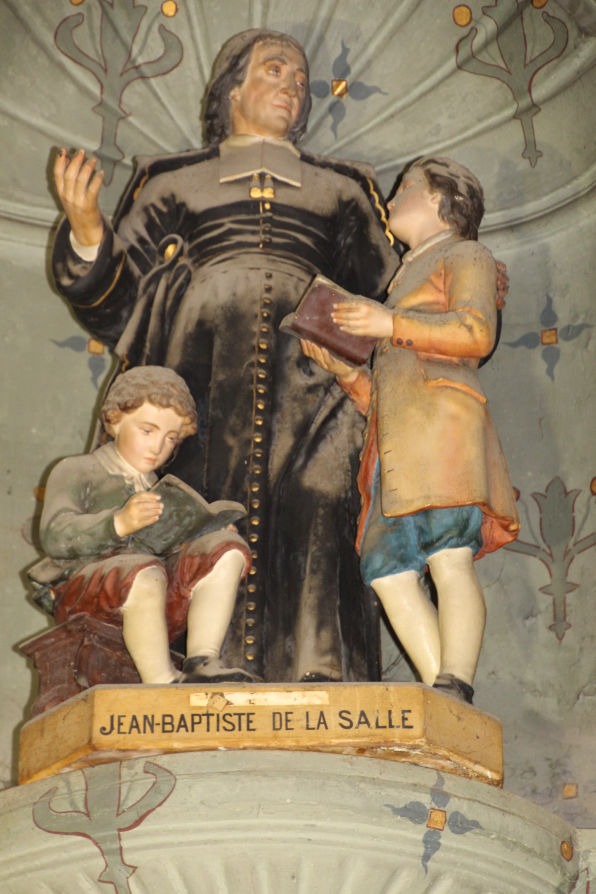
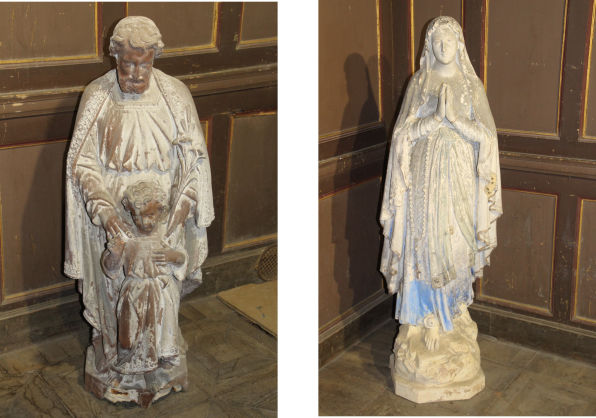

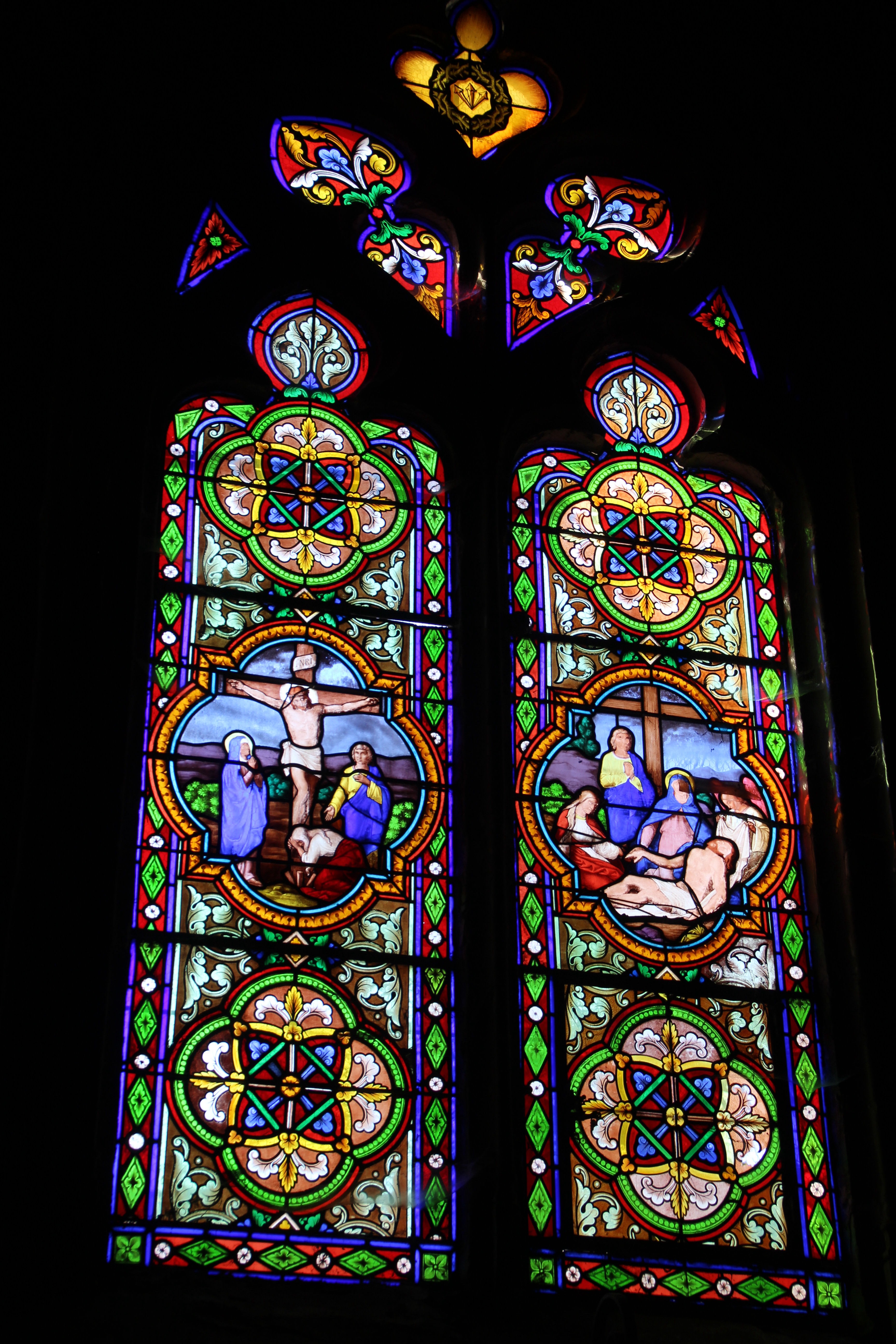
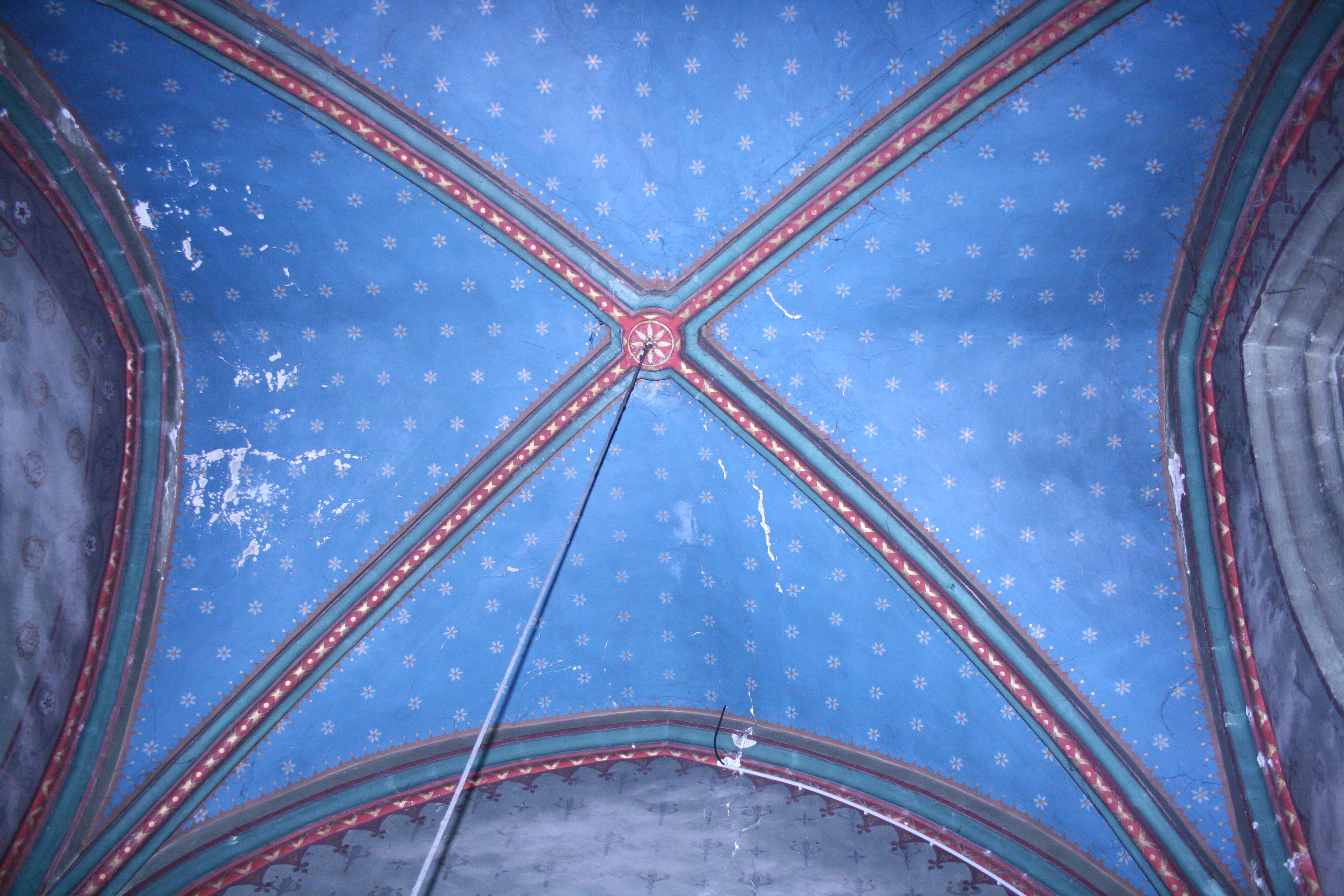
You can pause the presentation.